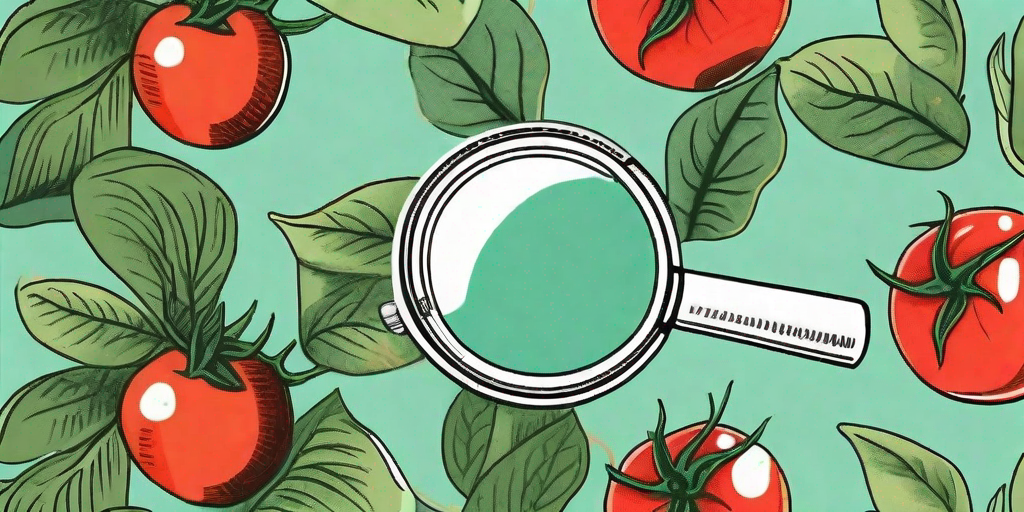
Ah, the humble tomato. A gardener's delight and a salad's best friend. But what happens when your tomato plants start sporting yellow spots on their leaves? Panic? Despair? No, dear reader, you roll up your sleeves and get to work. Because yellow spots on your tomato leaves are not a death sentence, but a call to action. And we're here to guide you through it.
Understanding the Yellow Spots
Before we dive into the nitty-gritty of solving the problem, let's first understand what we're dealing with. Yellow spots on tomato leaves can be a symptom of many issues, ranging from nutrient deficiencies to disease. But fear not, for each problem comes with its own solution.
Let's start with the most common culprits: nutrient deficiencies. Tomatoes are heavy feeders and can quickly deplete the soil of essential nutrients. When this happens, the leaves may start to yellow. The most common deficiencies are nitrogen, potassium, and magnesium.
On the other hand, yellow spots can also be a sign of disease. The most common diseases that cause yellowing are early blight, late blight, and Septoria leaf spot. Each of these diseases has its own distinct symptoms and treatment methods.
Finally, environmental factors can also cause yellow spots. These include overwatering, underwatering, and temperature stress. Once again, each of these issues has its own solution.
Tackling Nutrient Deficiencies
Feed Me, Seymour!
As we mentioned earlier, tomatoes are heavy feeders. They need a steady supply of nutrients to grow and produce fruit. If your plants are showing signs of nutrient deficiencies, it's time to give them a good feed.
For nitrogen deficiencies, a good dose of compost or well-rotted manure can do the trick. For potassium deficiencies, try adding some wood ash or banana peels to the soil. And for magnesium deficiencies, a sprinkle of Epsom salts should do the trick.
Test the Soil
Of course, the best way to prevent nutrient deficiencies is to ensure your soil is well-balanced from the get-go. This means testing your soil before you plant your tomatoes.
Soil testing kits are readily available online or at your local garden center. They can tell you the pH of your soil, as well as its levels of nitrogen, phosphorus, and potassium. With this information, you can amend your soil as necessary before planting.
Preventing and Treating Disease
Keep it Clean
Disease prevention starts with good garden hygiene. This means cleaning up any fallen leaves or fruit, rotating your crops, and avoiding overhead watering.
Many tomato diseases are soil-borne, which means they can survive in the soil from one season to the next. By rotating your crops, you can help prevent these diseases from taking hold.
Treat it Right
If your plants do contract a disease, don't despair. There are many organic treatments available that can help control the disease and prevent it from spreading.
For early blight and Septoria leaf spot, a copper-based fungicide can be effective. For late blight, a fungicide containing chlorothalonil may be necessary. Always follow the manufacturer's instructions when applying these products.
Managing Environmental Factors
Water Wisely
Tomatoes like a steady supply of water, but too much or too little can cause problems. Overwatering can lead to root rot and disease, while underwatering can cause the plant to wilt and the fruit to crack.
The key is to water deeply but infrequently. This encourages the roots to grow deep into the soil, where they can access more nutrients and water. A good rule of thumb is to water your tomatoes once a week, giving them about 1-2 inches of water each time.
Keep it Cool
Tomatoes are warm-weather plants, but they don't like it too hot. If the temperature regularly exceeds 90 degrees Fahrenheit, your plants may start to show signs of heat stress, including yellowing leaves.
To help your plants cope with the heat, provide some shade during the hottest part of the day. You can do this with a shade cloth or by planting taller plants nearby to provide some natural shade.
Frequently Asked Questions
- Why are the leaves on my tomato plant turning yellow?
Yellow leaves on a tomato plant can be a sign of nutrient deficiencies, disease, or environmental stress. It's important to identify the cause of the yellowing in order to treat it effectively.
- How can I prevent yellow spots on my tomato leaves?
Preventing yellow spots involves good garden hygiene, regular feeding, proper watering, and managing environmental stress. It's also important to rotate your crops each year to prevent soil-borne diseases.
- What should I do if my tomato plants have yellow spots?
If your tomato plants have yellow spots, the first step is to identify the cause. Once you know what's causing the yellowing, you can take steps to treat it. This might involve feeding your plants, treating them for disease, or adjusting your watering practices.
So there you have it, folks. A comprehensive guide to saying goodbye to yellow spots on your tomato leaves. With a little knowledge and a bit of elbow grease, you can ensure a healthy and bountiful harvest. Now go forth and grow!











